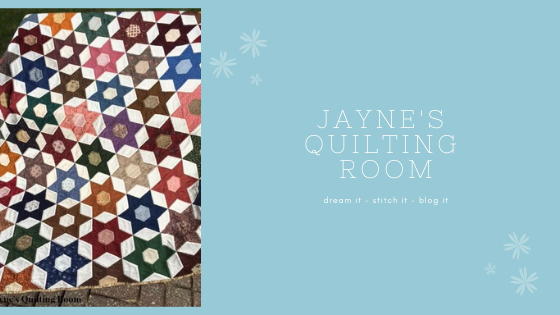The tub is getting messy from my use of it. In addition to all the hexies, I have thread, needles, thimble pads, and whatever other necessities I might need cluttering the space.
The picture above is what three rows sewn together looks like with the paper still in. I am hoping that once the papers are removed, the surface will look more natural and flat.
My intent is to be as random in my placement as possible, yet I still find myself being far too deliberate in the choice of what fabric to use next. However, that only affects the row I'm working on. I don't really lay it all out to see what will be above or below it, so it really should just be random.
The top section is three long rows stitched together. The middle shows two rows that are partially connected. The bottom two single rows are next to be attached.
Can you see the "lake effect" that the pattern designers were going for? I am using random fabrics I picked up last April while on retreat. I later added pieces from the Minick and Simpson line that was used in the original pattern. This blend of their stuff and my stuff will work fine, I hope.
So now you see my Lake Effect progress. While it was rather a daunting endeavor when I began it, I am finding that it is easier and quicker than I anticipated. Boy, am I glad about that.
Happy Quilting, Friends!






Sorry for the seam ripping session, but you dealt with it in the best fashion. I too cannot do random well, but I think your method will result in a good mix.
ReplyDeleteI'm really seeing the lake effect now. It will look like reflections in wind rippled water :-) I did a little bit of research into how we 'do' random and discovered that we are wired for balance rather than random. A truly random distribution could end up with all the red pieces in one quarter of the quilt top but we see a balanced distribution as more satisfying. I think that is true and explains why we can't help 'fiddling' with a random pattern!
ReplyDelete